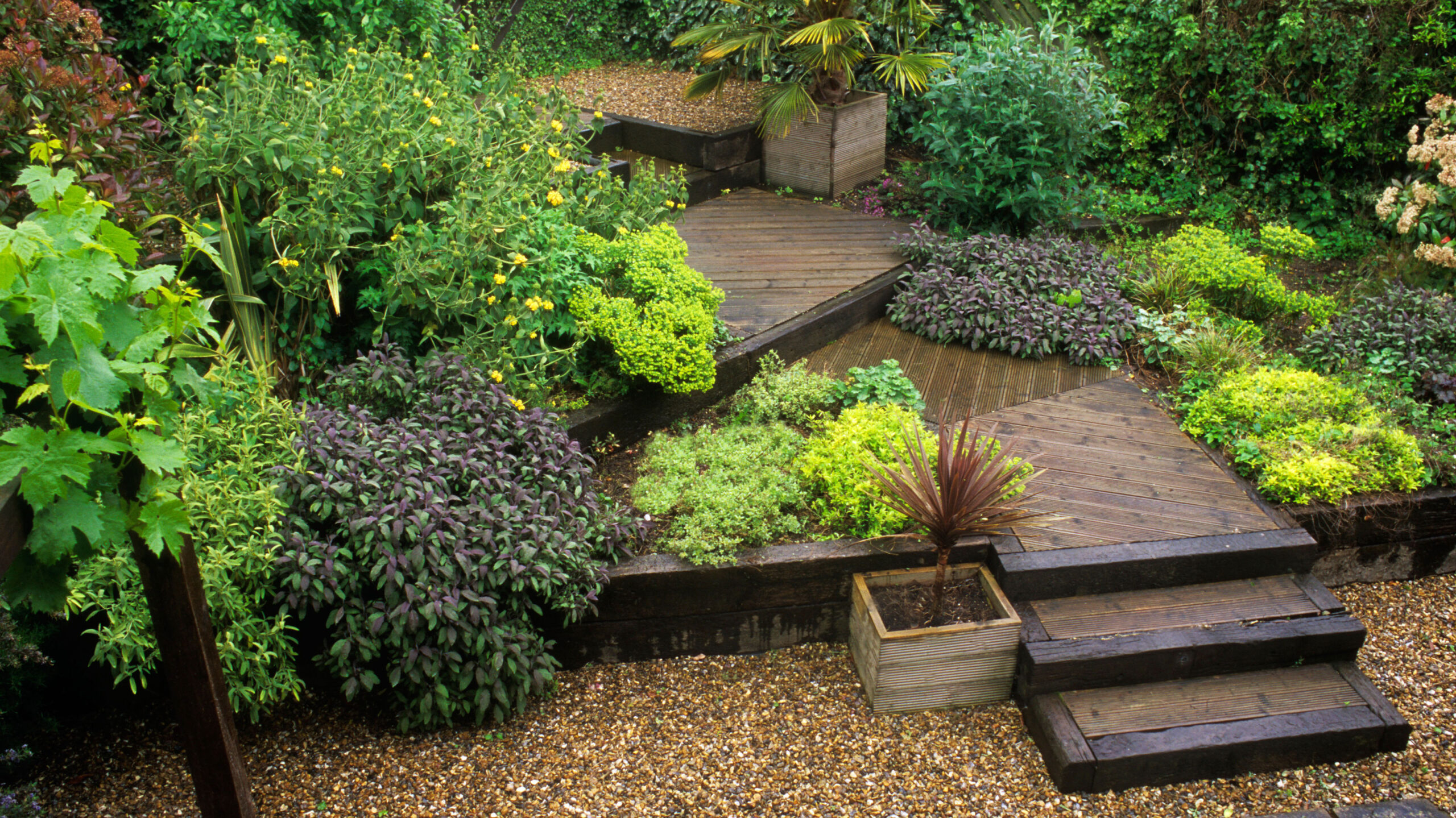To landscape with railroad ties, first determine where you want to place them and how many you will need. Then, use a shovel to level the area and create a base for the ties. Once in place, use rebar or spikes to secure them and prevent shifting.
Why Not To Use Railroad Ties For Garden?
It has been demonstrated that the chemicals in old railroad ties leak into the soil and are absorbed by plants, so your vegetables may contain a dose of a known carcinogen.
Railroad ties, also known as landscape timbers, can be tempting to use for gardening purposes due to their durability and low cost. However, they should not be used for this purpose.
They are treated with toxic chemicals that can leach into the soil and harm plants and people
These chemicals include creosote, which is a known carcinogen. In addition, these ties can be difficult to move and work with due to their weight and size, making them impractical for garden construction.
To ensure the health and safety of your garden and yourself, it’s best to avoid using railroad ties and opt for safer alternatives like untreated wood or stone.
How Long Do Railroad Ties Last In A Garden?
Railroad ties are a popular and affordable option for edging garden beds and paths. They are durable, resistant to pests and rot, and have a rustic charm. But how long do they last in a garden? The answer depends on several factors, including the type of wood, the quality of the ties, and the conditions they are exposed to. Generally, untreated ties last 7-10 years, while chemically treated ties can last up to 25 years.
However, they can release harmful chemicals into the soil and should be avoided if you plan to grow edible plants. Regular maintenance and sealing can extend their lifespan.
Important Factors to Consider:
– Type of wood
– Quality of the ties
– Exposure to weather and moisture
– Chemical treatments
– Risk of chemicals leaching into the soil
To ensure that your garden ties last as long as possible, it’s important to choose high-quality, treated or untreated wood, and protect them from water damage. Regular inspections and maintenance can also detect and prevent any signs of deterioration or rot. By taking the necessary steps, you can enjoy the practicality and charm of railroad ties in your garden for years to come.
Not:In addition to the information we have provided in our article on
railroad ties garden ideas images, you can access the wikipedia link here, which is another important source on the subject.
Can You Use Railroad Ties Around A Garden?
Railroad ties have been used in gardens and landscapes for decades. Their worn appearance makes them ideal for raised garden beds, steps, retaining walls, and rustic benches and decks.
These ties have been popularly used as garden borders and retaining walls for decades. However, there are some important factors to consider before using railroad ties around your garden.
The first thing to keep in mind is that railroad ties contain chemicals like creosote, which may seep into the soil and contaminate your garden.
Secondly, they are very heavy and difficult to handle, and may require a professional landscaper to install.
Finally, they may not be an eco-friendly option for garden design. Despite these concerns, if you do decide to use railroad ties for your garden, ensure they are properly sealed, and take necessary precautions to avoid contact with the chemicals inside.
How Long Do Railroad Ties Last In The Ground?
Railroad ties, also known as sleepers, serve as a critical component in rail track systems, providing stable support for the rails. However, as they are continuously exposed to harsh weather conditions and soil elements, the lifespan of these wooden ties gets significantly impacted.
According to industry estimates, untreated timber these ties can last up to 8-10 years in the ground. However, treated hardwood or creosote treated ties have a longer lifespan that ranges from 15-20 years. It is important to note that factors like moisture level, temperature, and insect damage can significantly reduce the lifespan of these ties.
Hence, regular maintenance and efficient replacement planning are crucial to ensure the longevity of rail track systems.
Important items related to the subject:
– Railroad ties are critical in rail track systems.
– They are continuously exposed to harsh weather conditions and soil elements.
– Untreated timber railroad ties last up to 8-10 years; treated hardwood or creosote treated ties last 15-20 years.
– Moisture level, temperature, and insect damage can significantly reduce their lifespan.
– Regular maintenance and efficient replacement planning are crucial to ensure the longevity of rail track systems.
What Is A Cheaper Alternative To Railroad Ties?
Rail road ties can be replaced with landscape timbers, which are more adaptable and friendly to the environment.
These ties are commonly used to create retaining walls or pathway borders, but they can be expensive and pose environmental concerns due to their chemical treatments. However, there are cheaper and more eco-friendly alternatives to railroad ties.
Concrete blocks or bricks can be used in place of railroad ties, as they are more durable and do not require treatment. Additionally, recycled plastic lumber or composite materials, made from recycled plastics and wood fibers, can be used as a sustainable alternative. These options provide affordability and sustainability while still achieving the desired aesthetic and functionality.
Cheaper alternatives to railroad ties include:
– Concrete blocks or bricks
– Recycled plastic lumber or composite materials
Consider these eco-friendly options for your next landscaping project.
Railroad ties can add an interesting touch to garden decor. However, there are concerns about their safety due to the chemicals and creosote residue used in their treatment. It is recommended to exercise caution and consider using alternative materials for garden decor.
